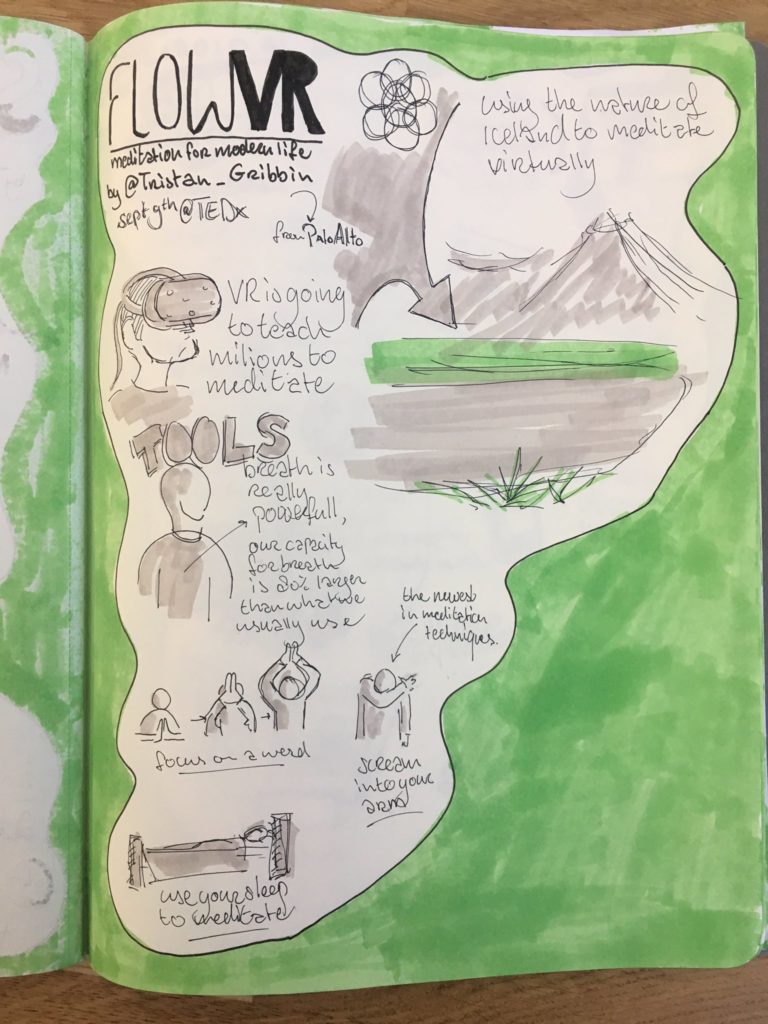Tristan Gribbin is the creator and CEO of FLOW and is passionate about helping bring meditation to the world. She has been practicing meditation with serious dedication since the year 2000 and is a recognised meditation teacher in Iceland.
Flow has a VR meditation app which has won the opportunity to pitch in the US at TechCrunch Disrupt this September. Tristan will walk us through meditation, Virtual Reality and how this new material impacts our senses and where the Web might be headed.
Tristan walks the audience through some basic meditation techniques and we learn more about how technology is helping us achieve calm in a new and faster way.

Because…
Tristan and the FLOW team have been pushing the boundaries of meditation by using Virtual Reality to connect and centre us on places we’d not normally be able to go to. They use unadulterated 360 VR views of Icelandic nature along with soothing audio get you into the right state of mind.
Virtual Reality, as a technology, gets a mixed wrap. Some people are bullish, others bear. The AR/VR debate will continue for a long time, but we wanted to bring someone to the conference with experience in VR who could actually demo something to our attendees. Rather than just talk about the ills and benefits, people could sit in the coffee breaks and be magically teleported into Icelandic nature and decide for themselves.
The Web is also not confined to rectangular screens. It can take many shapes, one of which is 360 virtual reality. We wanted to at least introduce this to our attendees and let them see one potential future.
FLOW ➞ Web
When it comes to the Web, some try to categorise interacting with it into two main buckets: “lean forward” or “sit back”. They are trying to describe wether the interactions are consume (sit back) or create (lean forward). The Web allows us the ability to watch videos, listen to music, read and generally relax. It also allows us to create content, write, work and share with others. There are plenty of other modes and models in between, but these are the two big ones people focus on.
With VR, it is obvious that we can consume. We can watch videos, play games and enter into virtual worlds. FLOW is an example of a tool that helps you relax and consume to get you to meditate.
We’re not used to thinking about the Web outside of our rectangular glass screens, but it is everywhere. From ATM banking machines to VR Glasses, they are fetching data over the Internet and it is probably being fetched via the HTTP protocol and that means it’s on the Web.
FLOW is designed as a tool for meditation, but it isn’t a big jump to see VR as a tool for other ‘work’ related tasks. From previewing construction sites to allow plumbers, electricians and other tradesmen advanced looks at unbuilt structures, to collaborative spaces for meetings. There are ‘lean forward’ types of applications for VR which will be Web-based. There aren’t many yet, but if we can better understand the material and how the Web can interact and be used in 360 VR, then we cam create amazing new tools and experiences not in existence today.
You can view all the video recordings and subscribe to the Material podcast on the Material Archive site.